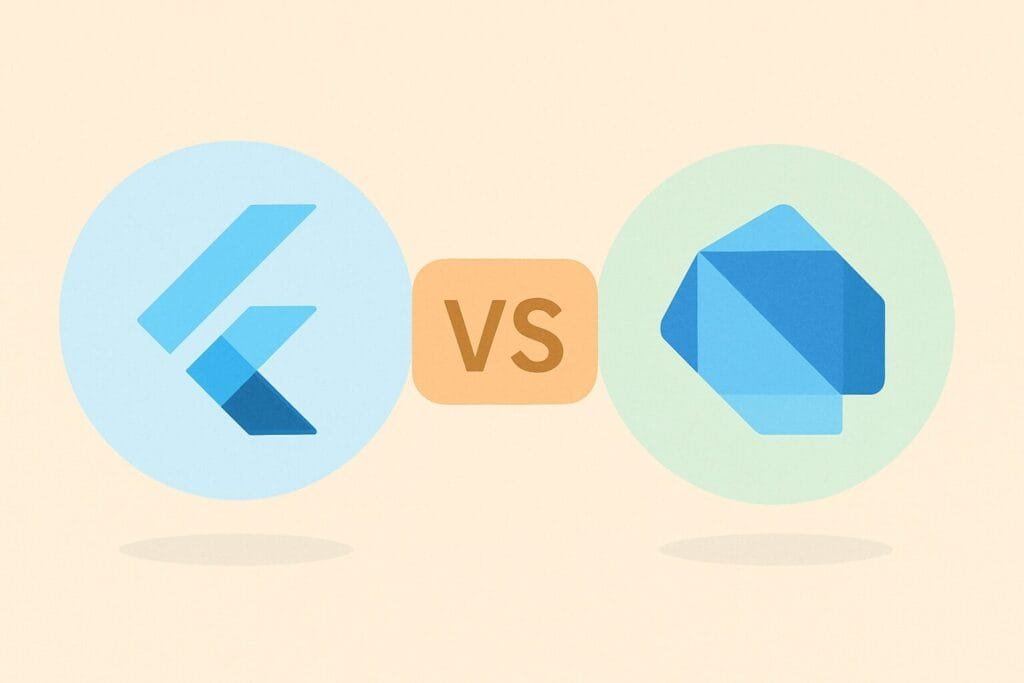If you’re new to mobile app development, you might have heard the terms Flutter and Dart thrown around together. While they are closely related, Flutter and Dart serve different roles in the development ecosystem. Understanding their differences is key if you’re planning to build apps using modern cross-platform tools.

What Is Flutter?
Flutter is an open-source UI toolkit developed by Google. It allows developers to build natively compiled applications for mobile, web, desktop, and embedded platforms from a single codebase. Flutter is known for its hot reload feature, customizable widgets, and expressive UI design.
Flutter itself is not a programming language. It’s a framework built on top of Dart. You use Flutter to design and structure your app visually.
What Is Dart?
Dart is a programming language, also developed by Google. It’s the language used to write Flutter apps. Dart is designed for building frontend user interfaces, especially in web and mobile environments. It compiles to ARM or JavaScript, making it versatile and high-performance.
Dart supports both JIT (Just-in-Time) and AOT (Ahead-of-Time) compilation, which enables fast development cycles and smooth production builds.
Key Differences Between Flutter and Dart
| Feature | Flutter | Dart |
|---|---|---|
| Type | UI Framework | Programming Language |
| Developed By | ||
| Purpose | Build cross-platform UIs | Write app logic and structure |
| Compilation | Uses Dart to compile | Compiles to native ARM or JavaScript |
| Example Use | Widgets, UI layout, animations | Functions, classes, business logic |
Example Code Using Flutter and Dart
Here’s a simple example to demonstrate how Dart and Flutter work together:
import 'package:flutter/material.dart';
void main() {
runApp(MyApp());
}
class MyApp extends StatelessWidget {
@override
Widget build(BuildContext context) {
return MaterialApp(
home: Scaffold(
appBar: AppBar(title: Text('Flutter + Dart')),
body: Center(child: Text('Hello World')),
),
);
}
}
- In this code:
- The Flutter framework handles the UI (
MaterialApp,Scaffold,AppBar, etc.) - The Dart language is used to write the logic and structure (
void main(),class, etc.)
- The Flutter framework handles the UI (
Conclusion
In summary, Flutter is the framework, and Dart is the language. You can’t use Flutter without Dart, but you can use Dart without Flutter (e.g., for web or backend projects).
Understanding this relationship is essential for any developer interested in modern app development. If you’re just getting started, check out Google’s Dart & Flutter overview to dive deeper into their architecture and use cases.

